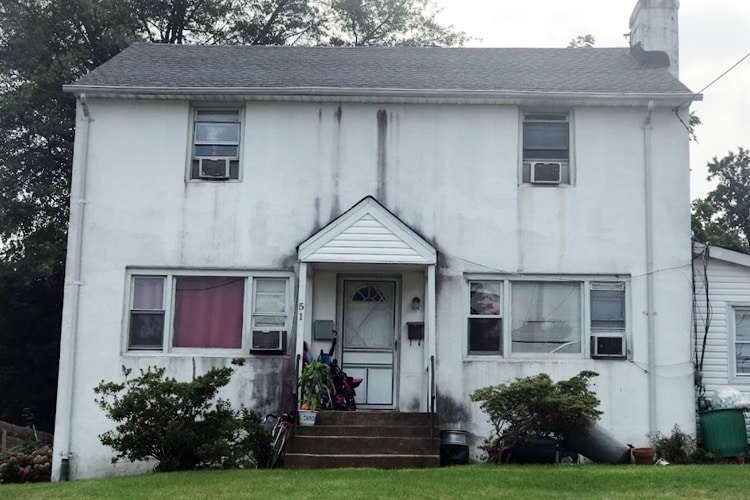Waterproofing of Flat Roofs is extremely important as the uppermost part of a building or a house is the roof and it shields the entire structures from all types of external factors (i.e., rain, dust, wind, sunlight etc) and provides a complete shape to the structure.
The roof generally divides into three broad categories:
1. flat roof; 2. pitched roof, and 3. shells and folded plates.
As per Scottish Technical Handbook flat roofs are, “the slope of which does not surpass 100 from horizontal”. The mode of construction of flat roof involves one of the following; reinforced concrete, reinforced brick work, precast concrete roof, and waffle units.
Mostly the roof is one of most neglected components of a house because it is hard to reach and out of sight. Because most roof sealers deteriorate within a couple of year, regular maintenance and inspections are mandatory to inspect any leakage from the roof, as roofs constructed from reinforced concrete are mostly porous and holds moistures. Thus, moisture or water leakage flows from top floor to ground floor through walls and ceilings, and result in the commencement of one or more of the following problems:
- Dampness on wall
- Water dripping
- Peeling of paint and plaster from the wall
- Growth of fungus leading to unhygienic condition and onset of diseases
- Ingress of water into wall causing electric short circuiting
In order to prevent the leakage and dampness of roof,
Waterproofing of Flat Roofs is the most promising technique for maintaining your roof in good condition. But it gets more difficult when dealing with a flat roof. Unlike sloping roofs, which enable water to easily slide off, flat roofs have a relatively shallow slope and so accumulate dust particles, and other debris, which may hinder the roof from draining water from the exterior of structure, as required.
The waterproofing material laid on the roof requires substantial focus because it is subjected to an accelerated degradation procedure; however, its key role is to develop resistance against water in the entire structure and particularly in the roof section. In addition, the waterproofing material should also resist certain factors such as;
- Atmospheric factor
- Temperature fluctuation
- UV-rays
- Movements
- Expansion or shrinkage
- Structural elements
In this context, there is a need for a thorough research and assessment of the suitable waterproofing design, construction technology, and maintenance procedures from the design stage to prevent any waterproofing flaws during the roof treatment.
Furthermore, an analysis of environmental factors, as well as of the various failure factors during construction, based on field cases, is required for selecting a most appropriate waterproofing or sealing method that can withstand the environmental conditions over an extended period of time.
The proper design of the flat roof’s falls is essential to the roof’s overall drainage. A roof should be provided proper channels that prevent any water stagnation and allow flow of water away from the roof towards suitable drainage points. Surface water must be removed off the flat roof as soon as possible to avoid accumulation of water on the roof surface.
Because of temperature variations between the wet and dry roof sections, a differential thermal movement may be initiated which is a major source of roof deterioration.
Benefits of Waterproofing of Flat Roofs
Zavza Seal is an experienced General Contractor that is driven by a desire to exceed expectations. We are serving Long Island communities such as Suffolk, Nassau, and Queens. We are a one-stop construction business specialising in basement waterproofing, driveway and garage paving and sealing, parking structure waterproofing, concrete commercial roofs and commercial roofing repairs and replacement. We are offering our customers a complete waterproofing package that encompasses all waterproofing methods, waterproofing of flat roof, sealing leaks and fissures, and consultancy in related matters.
Zavza seal is proud to introduce waterproofing cement, a waterproof bond coat with unmatched adhesive characteristics. This adhesive can be applied directly on the roof without any primer or bond coat and provide a long-lasting insulation to any leakage or water dampness.
waterproofing cement can be applied on the substrate by trowel, roller (3/4”), brush or by spray. It can be applied on the surface in two layers, i.e., one vertical and one horizontal. After the first layer successfully passed the thumbnail test, the second layer should be laid over it.
In addition to waterproofing cement, Zavza Seal also offers its new state of the art waterproofing products related to Waterproofing of Flat Roofs: APMC and COAST. Our goal is to design a product as per the requirement of the client and Waterproofing of Flat Roofs. We ensure that your flat roof will be leak-free for many years to come.
You can learn more about waterproofing here. Got questions? Do reach out to ZavzaSeal contractors for a fine work at a reasonable cost.








